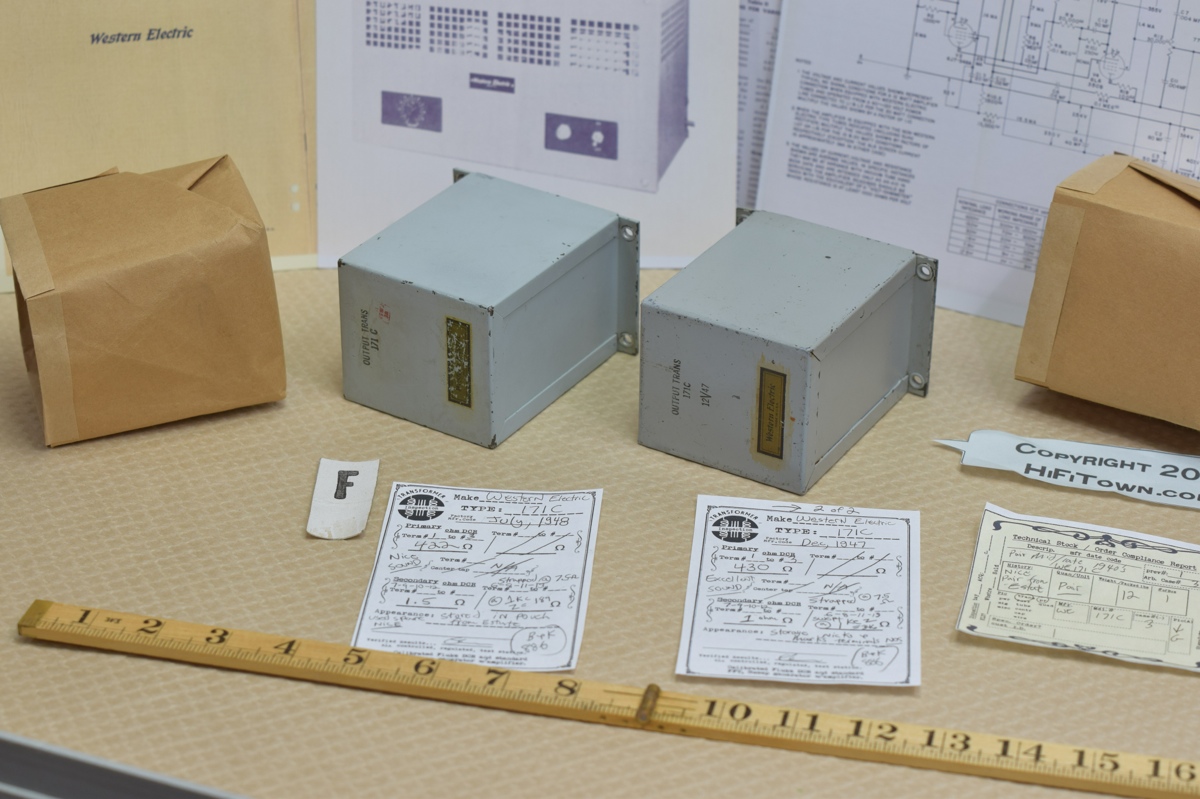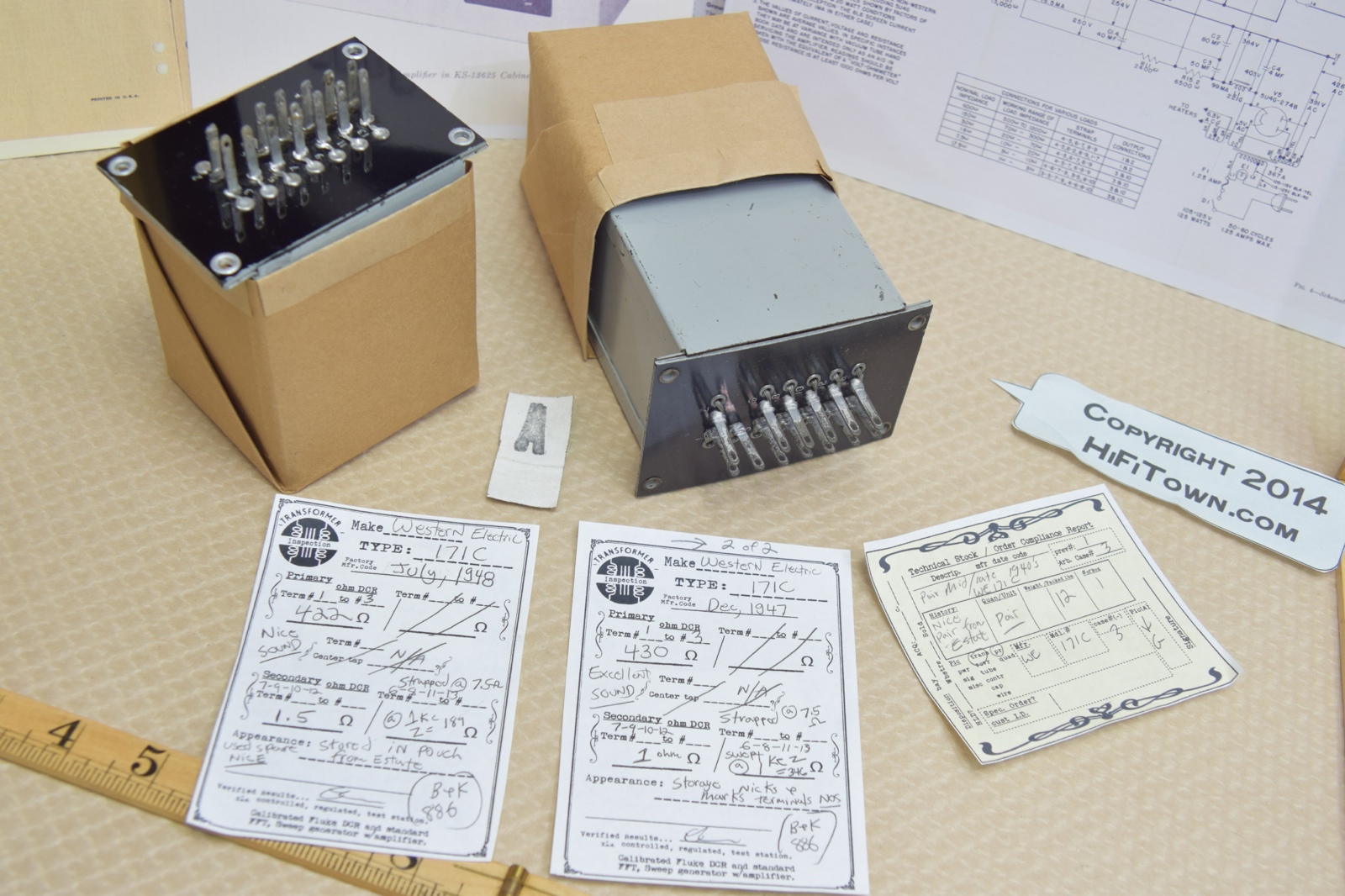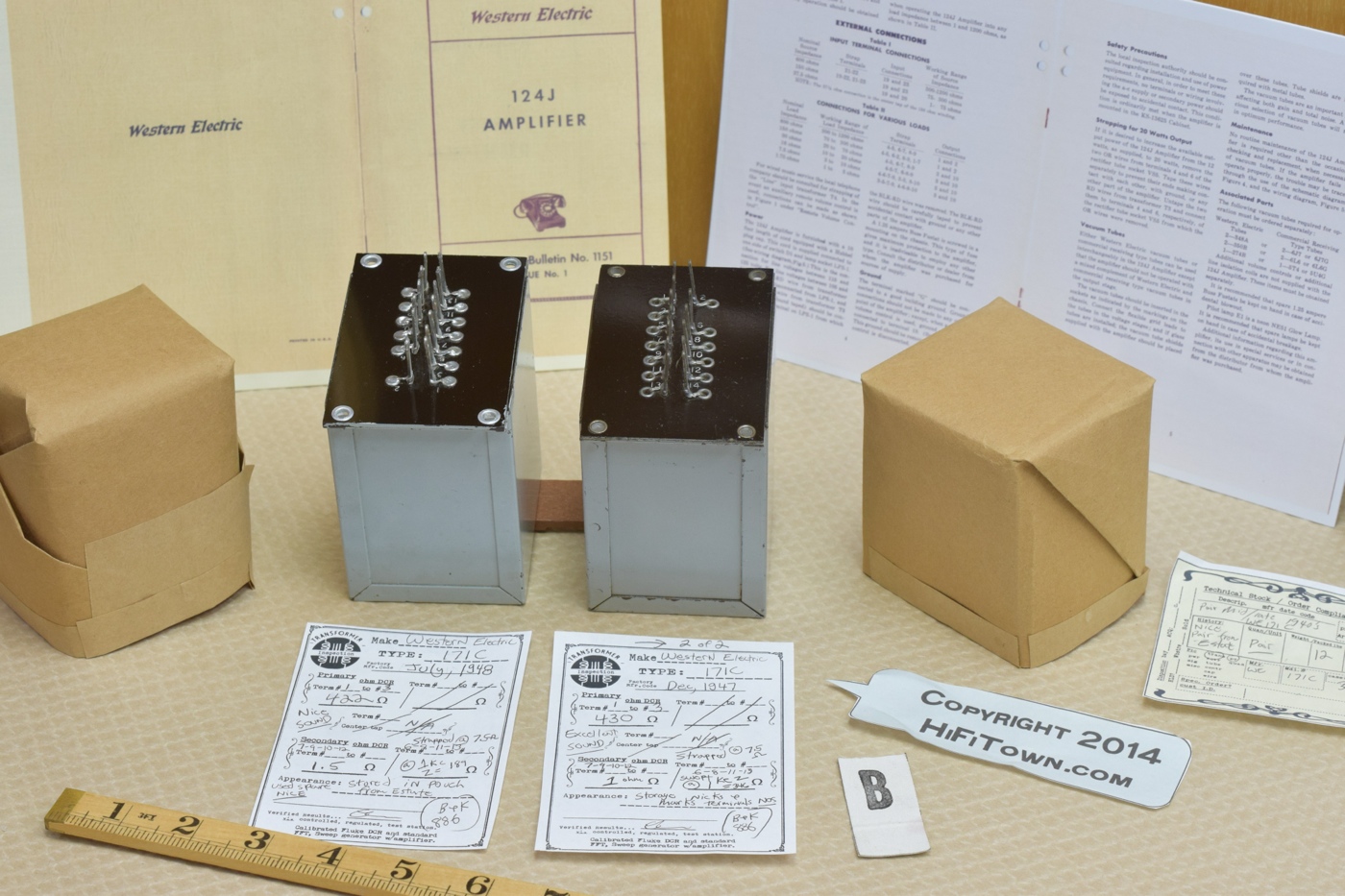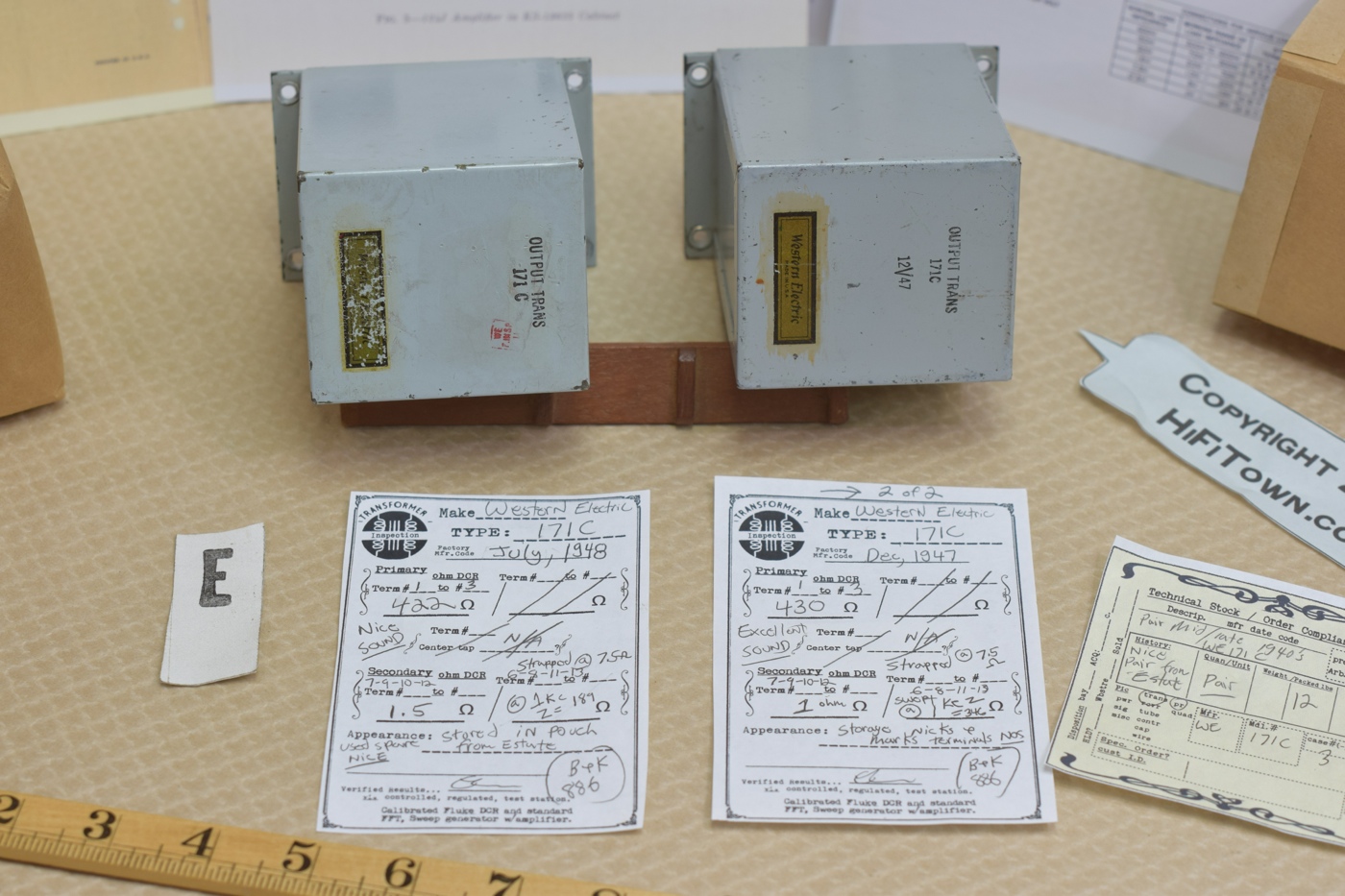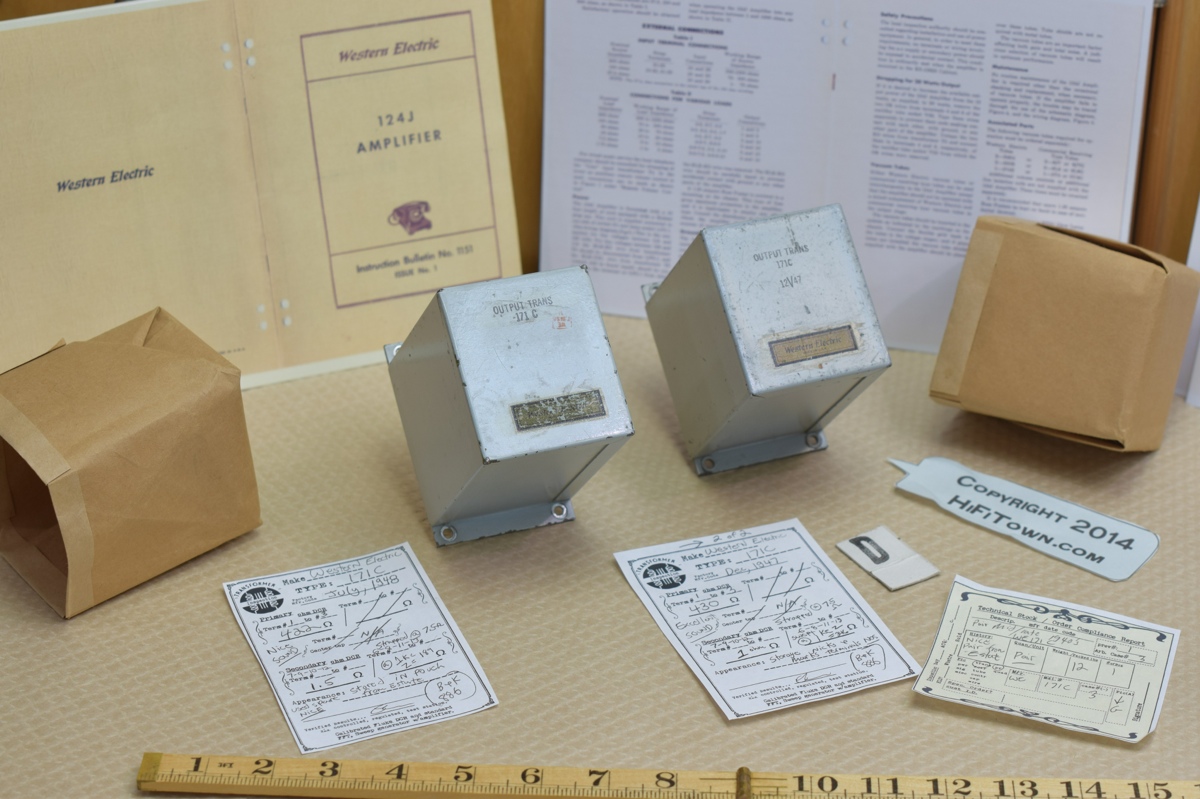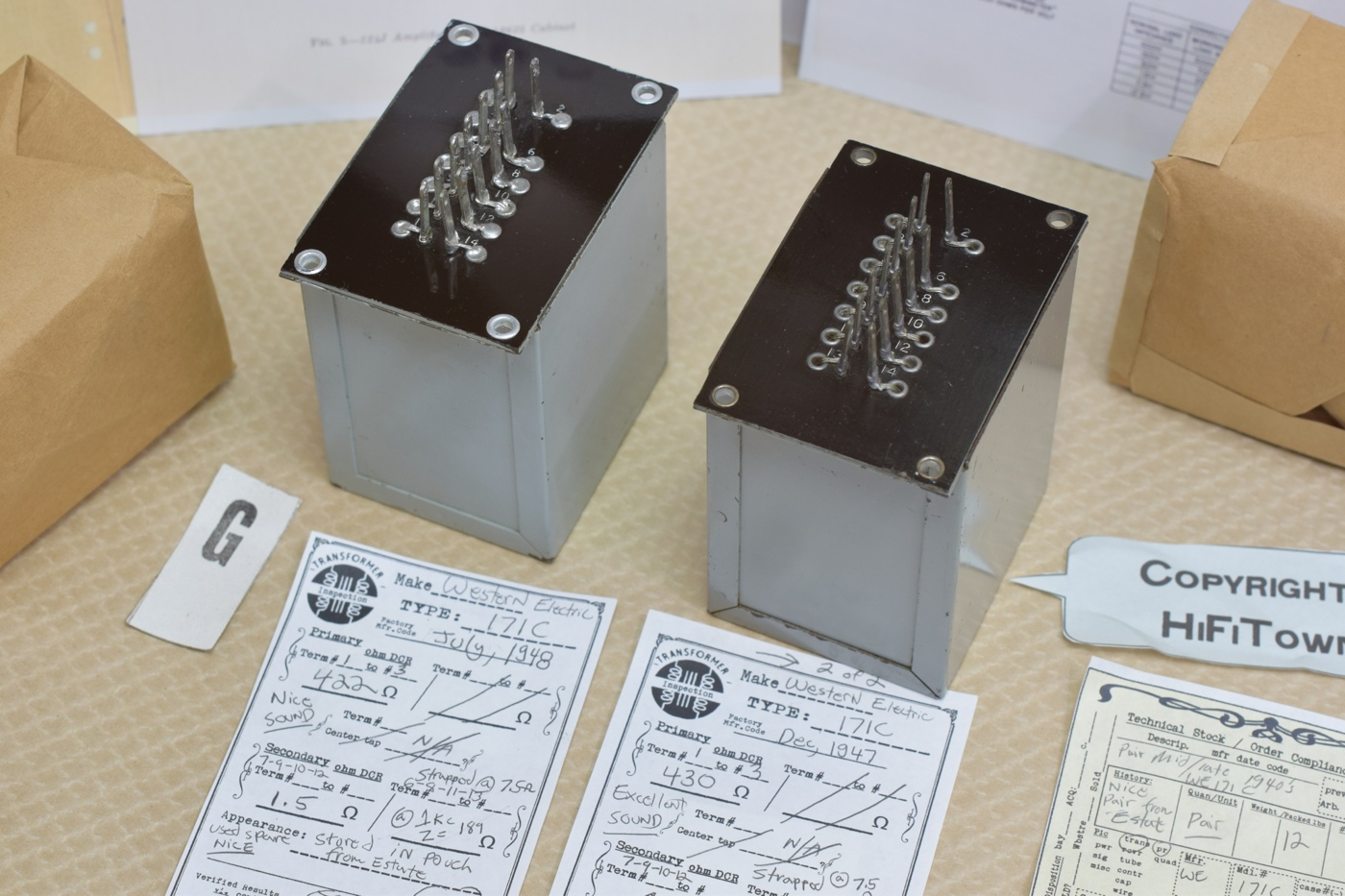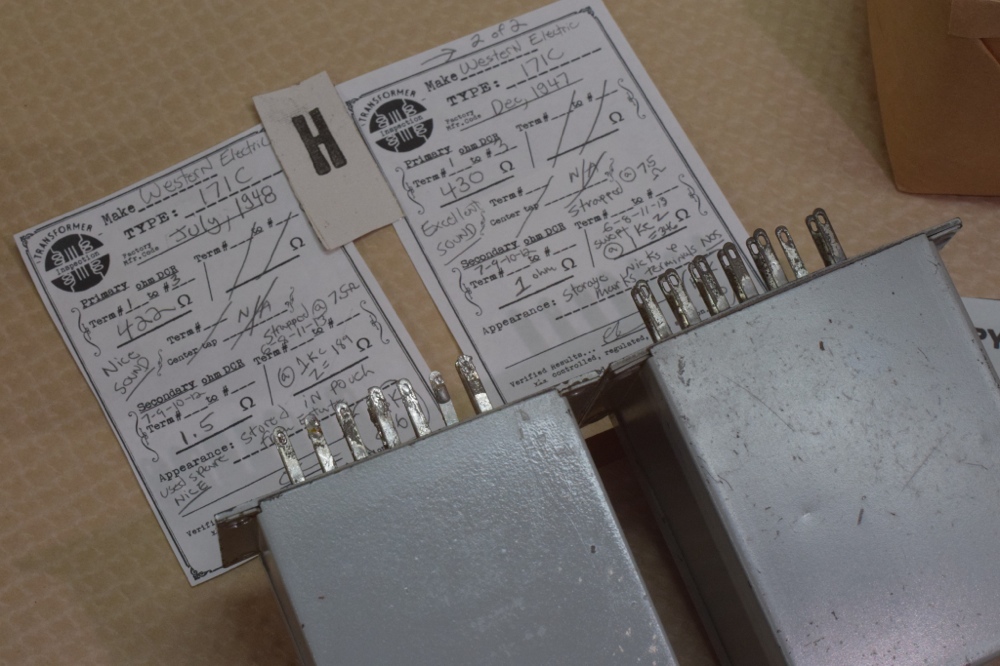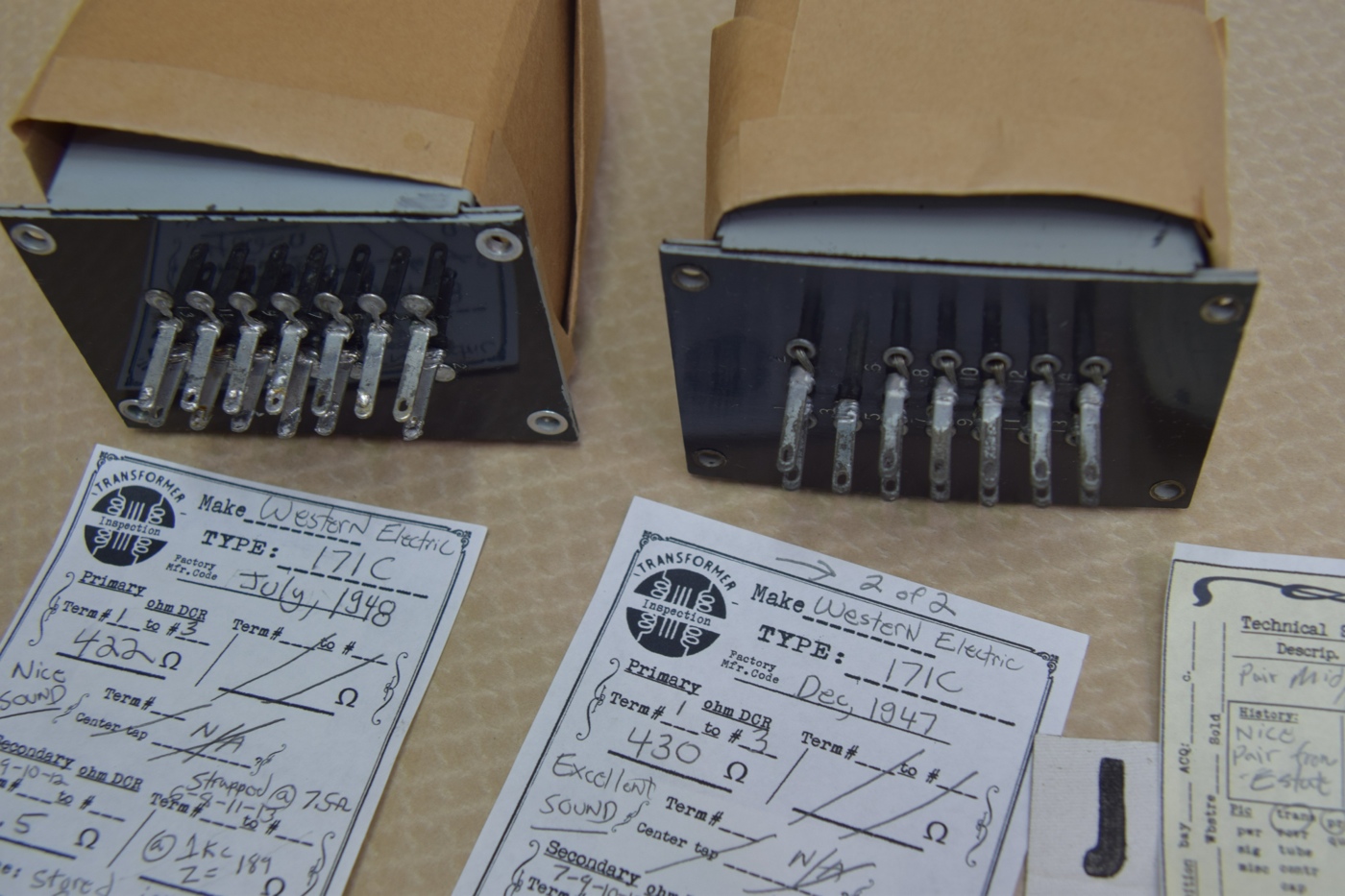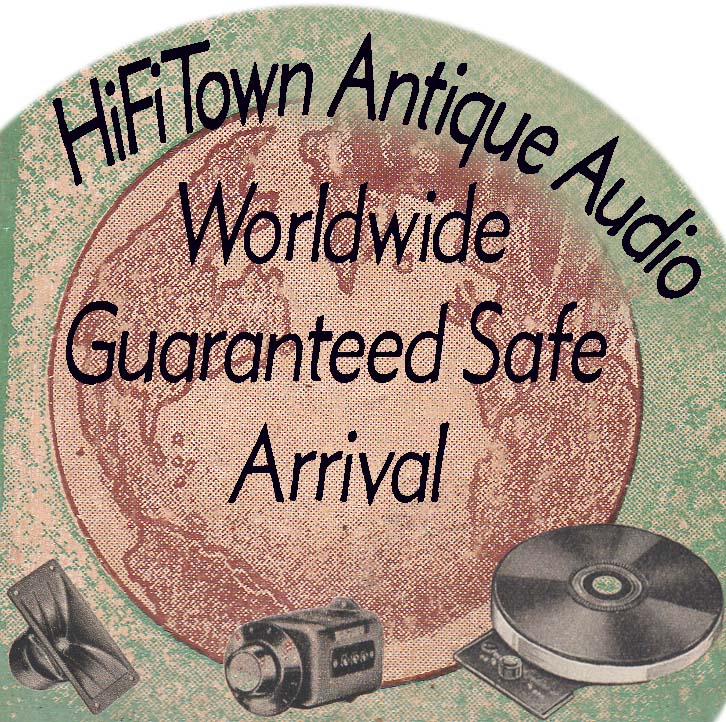From the apex of Western Electric's quality, a nice matched set of 171C output transformers, their finest post war audio output transformer. Built in house, by Western Electric, solely for quality powered output of audio signals (used for a great many places throughout the Bell system of the 1940s-1960s). While other versions of the 171 can be useful and have terrific fidelity...the 171 C varient is one of the most versatile amp transformers you can own. Clever uses for these abound, and it's possible to successfully build many more circuits around these than you could imagine -- well beyond the excellent WE layouts that perfected Push-Pull 6L6/350B, 349 (6f6) and many other wonderful power tubes. The 171C has found service in too many clever, good sounding amps to name here. Research your uses -- once you own a pair of 171C's you'll be well equipped for an astonishingly broad array projects.
Nice pairs from the 1940s are seldom seen, truly scarce catch!
The WE171C appeared in the late 1930s, right before WWII -- and to my knowlege made it's debut as featured OPT on WE's highest fidelity audio amps and line amps ... notably the WE 124 and lesser known, sought after WE 133A (an astonishingly good sounding 8 watt bridging amp which used the terrific 349A tube (6F6), (you can also enjoy the nice sounding 6V6) , famously used in the WE25 speech input console.
For the 1930's, the 171C transformer was a stunning departure from the old, large sand cast casings WE had been building since the 1920s. Along with the refined, look -- it did more and was smaller, internals were cutting edge for the late 1930s...silicon steel C-core, and and a broader range of output impedances than most any other comparable transformer, then and now. The features and quality construction of the WE171C are still imitated today. The secret of the 171 transformer's magical sound is under constant scrutiny and investiagation -- owners, listeners and collectors pay no attention to skeptics. Up and running the superior quality is easy to hear. Modern day transformer archeologists have been making progress in identifiying the reasons behind the sound. As has been long speculated, extremely careful engineering construction processes (ones that would be too costly today),complex and orderly lamination annealing (of the steel), and WE's very own copper windings are likely to thank for this. Modern hifi transformers, and other premium vintage from the more modern hifi post war era; (the Peerless 20-20k line, and UTC's Linear Standard) boasted much broader frequency ranges, as do modern boutique manufacturers, who you higher tout hi-tech alloys, and high end winders or techniques. None of those more modern options will satisfy the craving of ultimate in midrange realism, that so many Diy builders have experienced using these ancient WECO's. Once you hear the original Western Electric 171C, you'll know why it is so sought after, even in today's modern era. It simply sounds the best. Forget sales hype, and measurements of unachievable penultimate inaudible frequency range(s) and distortion / saturation figures (most important musical information is contained between the less exciting figure... 30cps - 10k (not to mention WECO's ratings are often hilariously conserative), and what is above this, while it exists -- is nowhere as important as the quality you hear in the 30 to 10,000 range ... this practical advice goes for almost any diy audiophile, and any brand of vintage or modern transformer). For the record though, this era of Western Electric is pretty much the worlds best. Other transformer companies came close sometimes...and a few matched WE for top-line offerings... but this happened only rarely ... examples of this were Partridge and Ferranti, they were huge and not as versatile.
The primary impedance of the 171C is 10,000ohms (terminals 1-3), as it is center tapped, and the ratio so large, some builders have actually pressed it into service in other ways (as single ended OPT, -in leiu of the harder to locate, and 171A, a surely experimental -- and daring implementation) The 171C features an impedance ratio of 10,000 to 600 amongst it's miltitude of windings, allow various series / parallel connections -- so it's Secondary can address the broadast needs of any loudspeaker, audio bridging or line amp! secondary impedances are 600ohms,150,30,16,7.5, and 1.75 at the lowest -- a terrific range for the amp and pre/line amp builder. It does it's job with stunning detail, clarity and gourgeous, well balanced tone.
The 171C had an long production life, quality examples were made from the 1930s through the 1960s (at least). The most sought after, are earliest engraved, followed closely by 1940s era ink stamps. Experienced audiophiles have notated globally that the 1940's ink stamp era, can sound the same as the earliest engraved models. This is a strong likelyhood as WE did not change production methods or quality standards during WWII. The engraved 171C was produced from 1939 thru about 1942 -- production ceased during 1943, and resumed in limited numbers during 1944-45 as "ink stamped" types (in which case internals would have been the same). No mater the year of production, the connections and impedances of your 171C wiill be the same. Quality control of this transformer was strong, so you'll always be happy with later units -- buy the oldest ones you can (1940s thru early 1950s are your best value), as they sound best -- and were typically the highest grade of production; these sound really nice, and they have the magic that most audiophiles and DiY amp builders dream of hearing.
Now that these are legendary -- they're getting tough to find, and more expensve by the day -- it's a long and hard search to find a pair. These, (see exhibit A, I, F) were selected spares from the estate of an engineer and dedicated audiophile, who kept them carefully shelved should his daily use units ever fail (they did not), so these were not pressed into service -- not during his long ownership. See exhibit A,C,D for reports -- note that Unit #2 appears to have never seen solder -- making it perhaps... NOS / unused. In any case, this is a top notch pair to use in your next project; the bakelite terminals are very clean, shinny and free of typical chips and cracks. See large photos for cosmetic evaluation...overall nice shape -- and they present beautifully in person, no mistaking their age. Both feature original battleship grey paint...and labels show aging, and the finish on both have many tiny nicks, chips and scrapes, completely normal given there nearly 70 years of storage.
Study exhibits below for resistance measurements of the primaries -- tested with audio signal, and 8ohm loudspeaker load, as well as de rigue DCR readings. These transformers are guaranteed NO DOA. Both transformers read good, and sounded great!
If you are planning to build your own amps now, or in anytime in your future audiophile lifetime, these would be a wise investment. Because of the stellar sound, and tremendous utility, they have been hoarded by listeners and collectors all over the world. Their value has steadily risen decade by decade, and in the most recent 10 years time, they have outperformed almost any other financial instrument or other precious asset. That's a pretty astonishing track record for an output transformer that is also such a pleasure to use daily.
You won't see a set this nice around for a long while -- so seriously consider buying it now -- they will sell very quickly.
Will be carefully double-boxed, in tri-wall cardboard with lots of cushion -- best, safest packing on eBay or anywhere else.
.. Your chance to buy these now with out a bidder's war....if under (3) feedbacks, please email FIRST before buying to confirm payment method/ability.
FAST OVERSEAS or DOMESTIC SHIPPING after payment.
All happy customers, please see 100% feedback on all vintage audio items.
OVERSEAS OK, via USPS EMS Express Mail (or for Canada & select countries, Intl. USPS Priority)
All Copyright 2014 HiFiTown.com
